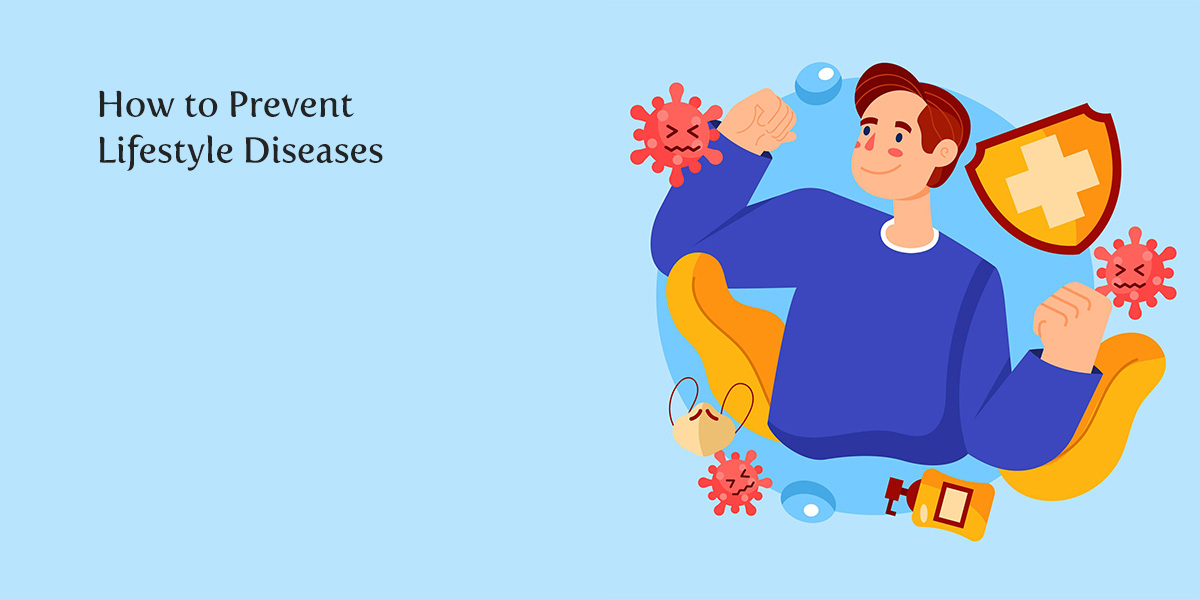What Are Lifestyle Diseases?
Lifestyle diseases, also known as non-communicable diseases (NCDs), are health conditions primarily influenced by unhealthy habits and lifestyle choices rather than infectious agents. These diseases often develop gradually over time due to factors such as poor diet, physical inactivity, excessive alcohol consumption, and tobacco use. They encompass a range of conditions including cardiovascular diseases, diabetes, obesity, certain cancers, and respiratory diseases.
Impact of Lifestyle Diseases
The impact of lifestyle diseases extends across individual health, public health systems, and economies. These diseases contribute significantly to morbidity and mortality rates worldwide. They lead to reduced quality of life, increased healthcare costs, and diminished productivity due to prolonged illnesses or disabilities. Lifestyle diseases place a substantial burden on healthcare infrastructures, diverting resources from other areas of healthcare and public health initiatives.
Risk Factors for Lifestyle Diseases
Several factors contribute to the development of lifestyle diseases:
- Unhealthy Diet: Diets high in processed foods, sugar, unhealthy fats, and low in essential nutrients contribute to various lifestyle diseases like obesity, diabetes, and cardiovascular issues.
- Physical Inactivity: Sedentary lifestyles devoid of regular physical activity increase the risk of obesity, heart diseases, and metabolic disorders.
- Tobacco Use: Smoking and other forms of tobacco consumption significantly elevate the risk of cancer, respiratory diseases, and cardiovascular problems.
- Excessive Alcohol Consumption: Heavy alcohol intake can lead to liver diseases, cardiovascular issues, and various mental health concerns.
- Stress: Chronic stress can contribute to several lifestyle diseases by affecting hormonal balance, immune function, and overall well-being.
- Genetics and Environment: While lifestyle choices play a significant role, genetic predisposition and environmental factors also influence the likelihood of developing these diseases.
Addressing lifestyle diseases involves implementing strategies that promote healthier lifestyles, including dietary modifications, increased physical activity, smoking cessation programs, stress management techniques, and public health initiatives to raise awareness and encourage healthier habits.
Factors Contributing to Lifestyle Diseases
Several interconnected factors contribute to the prevalence of lifestyle diseases:
Unhealthy Diet: High intake of processed foods, saturated fats, sugars, and low consumption of fruits, vegetables, and whole grains contribute to obesity, diabetes, and cardiovascular issues.
Lack of Physical Activity: Sedentary lifestyles and insufficient exercise increase the risk of obesity, heart diseases, and metabolic disorders.
Tobacco and Alcohol Use: Smoking, chewing tobacco, and excessive alcohol consumption significantly heighten the risk of various cancers, respiratory problems, and liver diseases.
Stress: Chronic stress impacts hormone levels and immune function, contributing to hypertension, heart diseases, and mental health issues.
Lifestyle Changes to Prevent Lifestyle Diseases
- Diet: Emphasize a balanced diet rich in fruits, vegetables, whole grains, lean proteins, and healthy fats while minimizing processed foods, sugars, and saturated fats.
- Physical Activity: Incorporate regular exercise into daily routines, aiming for at least 150 minutes of moderate-intensity aerobic activity per week.
- Weight Management: Maintain a healthy weight through a combination of balanced diet and regular exercise to reduce the risk of obesity-related diseases.
- Tobacco Use: Quit smoking or using tobacco products; seek support from cessation programs to reduce health risks associated with tobacco.
- Alcohol Use: Moderate alcohol consumption or abstain from excessive drinking to lower the risk of liver diseases and other health complications.
- Stress Management: Practice relaxation techniques, mindfulness, yoga, or meditation to alleviate stress and improve overall well-being.
- Sleep: Prioritize quality sleep by maintaining regular sleep patterns, aiming for 7-9 hours per night, as inadequate sleep can contribute to various health issues.
Conclusion
Preventing lifestyle diseases involves proactive changes in habits and behaviors. By adopting healthier lifestyle choices—such as maintaining a nutritious diet, engaging in regular physical activity, managing stress, avoiding tobacco and excessive alcohol, and ensuring adequate sleep—one can significantly reduce the risk of developing these diseases. Embracing these changes not only promotes individual well-being but also contributes to building healthier communities and reducing the burden on healthcare systems caused by preventable conditions. Making informed choices and prioritizing health can lead to a better quality of life and a healthier future.









Post a Comment